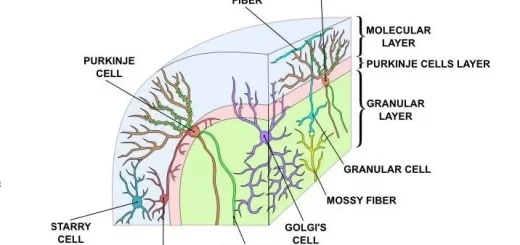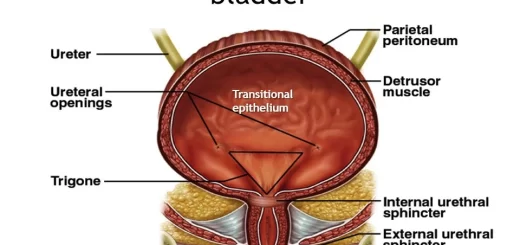Anatomy of nose, function of para-nasal air sinuses and Sphenopalatine Ganglion branches
The nose allows you to smell, it is the main gate to the respiratory system, your body’s system for breathing, It filters the air you breathe, It removes dust, germs, and irritants, It warms & moistens the air to keep your lungs and tubes that lead to them from drying out, It contains nerve cells that help you smell, common cold can make it hard for you to breathe, sleep, or get comfortable.
Nasal cavity
The cavity of the nose is subdivided into the right and left halves by the nasal septum, The two halves open anteriorly on the face through the nostrils (anterior nares), and open posteriorly into the nasopharynx through the posterior nasal aperture (conchae).
The bony skeleton of the nose:
I. Roof, formed by:
- Anterior part ……………….. The nasal part of the frontal bone + Nasal bone.
- Middle part …………………. the cribriform plate of the ethmoid bone.
- Posterior part ………………. the body of the sphenoid bone (anterior and inferior surfaces).
II. Floor, formed by:
- Anteriorly: The palatine process of the maxilla.
- Posteriorly by Horizontal plates of the palatine bone.
III. Medial wall (nasal septum), formed by:
- Postero-inferior ……………… Vomer.
- Superiorly ……………………… Perpendicular plate of the ethmoid bone.
- Antero-inferior ………………… Septal cartilage.
IV. Lateral wall of the nose: The lateral wall of the nose is subdivided into three areas which are Vestibule, Atrium, and Nasal conchae and meatuses:
1. Conchae are bony plates covered with mucous membranes, they are three (superior, middle, and inferior nasal conchae).
2. Meatuses are depressions below and lateral to each concha (superior, middle, and inferior meatuses).
- Superior meatus receives the opening of posterior ethmoidal air sinus
- Middle meatus has Bulla ethmoidalis that is a rounded elevation where the middle ethmoidal air sinus opens in it, and Histus semilunaris is a crescenteric groove (c) lying below the bulla ethmoidalis. It receives the following openings: Anterior ethmoidal air sinus, Frontal air sinus, and Maxillary air sinus.
- Interior meatus (below the inferior nasal concha): It receives the nasolacrimal duct which connects it to the lacrimal sac.
- Spheno-ethmoidal recess is a triangular fossa between the superior concha and the roof of the nose, and it receives the opening of the sphenoidal air sinus.
Arterial supply of the nose
- Sphenopalatine artery is a branch from the 3rd part of the maxillary artery (main arterial supply).
- Septal branch of the superior labial artery. (branch from the facial artery).
- In the ascending branch of the greater palatine artery, there are anastomoses between the above three arteries to form “Kieselbach’s plexus” on the antero-inferior part of the nasal septum (Little’s area), this area is a common site for the epistaxis (bleeding from the nose).
- Anterior & posterior ethmoidal branches of the ophthalmic artery supply the roof and upper parts of the lateral wall and septum.
Para-nasal air sinuses
They are air-filled spaces in certain bones that form the boundary of the nasal cavity, they open into the lateral wall of the nose.
Function:
- Warming and humidifying the inspired air.
- Diminishing the weight of the skull
- They add resonance to the voice.
The paranasal sinuses include:
- Maxillary air sinus …………. Inside the body of the maxilla.
- Frontal air sinus …………….. Between the two plates of the frontal bone.
- Sphenoidal air sinus ……….. Inside the body of the sphenoid bone.
- Ethmoidal air sinuses (anterior-middle-posterior) ………….. Inside the lateral part of the ethmoid bone, All the sinuses are present at birth except the frontal sinus which appears during the second year.
Sphenopalatine Ganglion
Type: Parasympathetic ganglion.
Site: In the pterygopalatine fossa.
Roots:
- Sensory: From the maxillary nerve.
- The sympathetic supply is a deep petrosal nerve that arises from the sympathetic plexus around the internal carotid artery.
- Parasympathetic: Greater petrosal nerve from facial N (It relays in the ganglion).
Branches:
- Postganglionic secretomotor fibers which supply the lacrimal gland.
- Lesser palatine nerves.
- Greater palatine nerve. It gives the lateral posterior inferior nasal nerves.
- Lateral and medial posterior superior nasal nerves.
- Nasopalatine nerve. (long sphenopalatine nerve)
- Pharyngeal branch to the pharynx.
- Branches to the orbital periosteum.
The postganglionic branches of the sphenopalatine ganglion supply the mucous glands of the palate, nose, nasopharynx, and lacrimal gland [all the glands above the hard palate].
Diaphragm anatomy, structure, function, Phrenic nerves and Nerves of the thorax
Larynx structure, function, cartilages, muscles, blood supply and vocal folds
Cellular respiration, Structure of ATP and types of fermentation
Respiratory Chain Electron Transport Chain (ETC) components, control and inhibitors
Blood vessels structure, function, layers, characteristics and How blood vessels work



